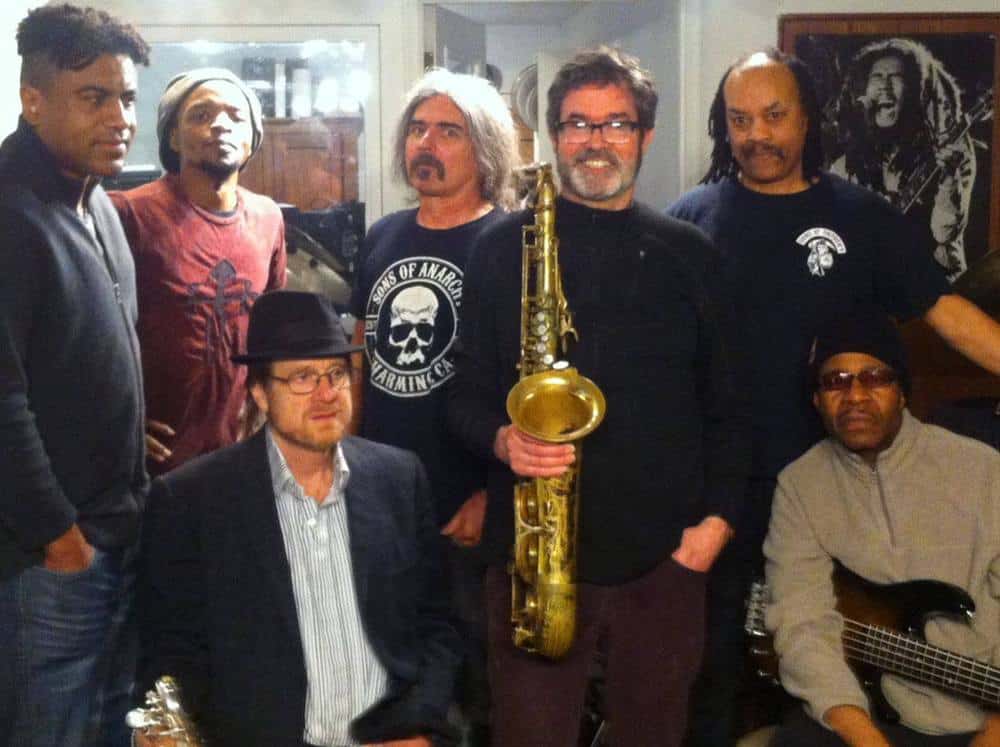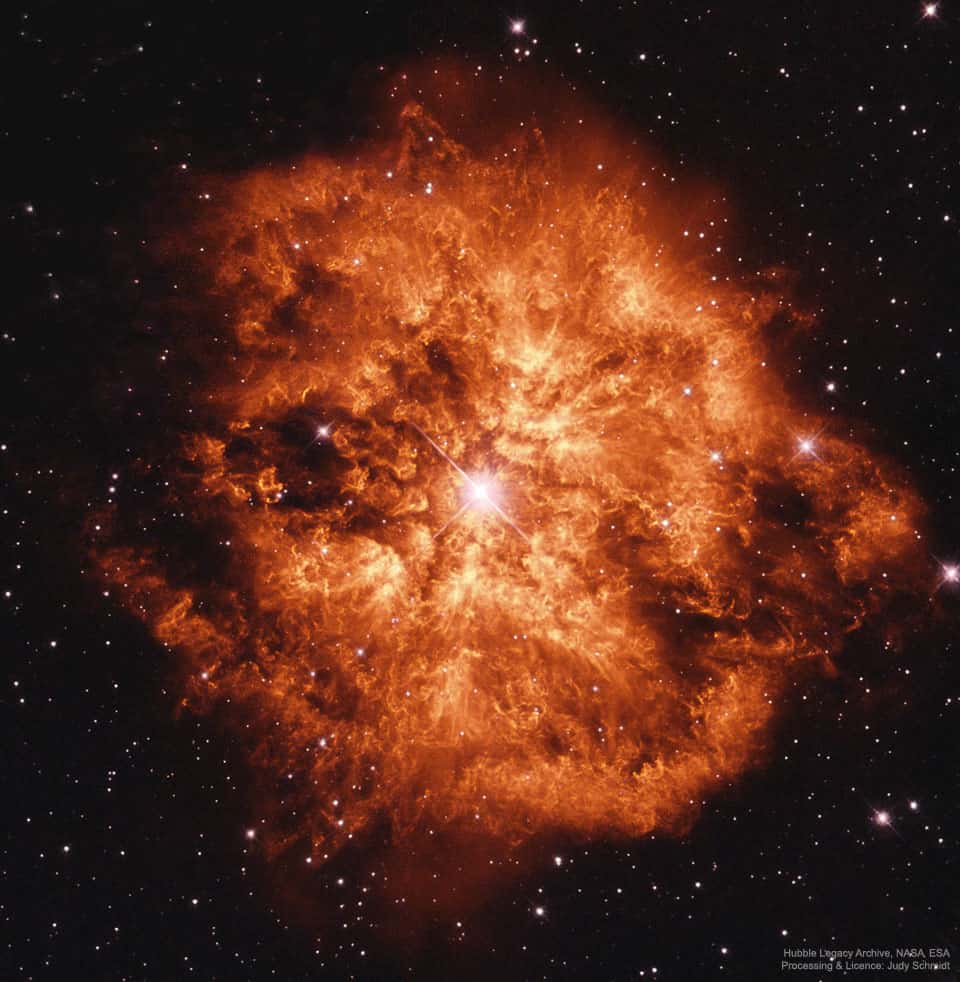Blog
This smattering of celestial sequins is a spiral galaxy named NGC 4455, located in the northern constellation of Coma Berenices (Berenice’s Hair). This might sound like an odd name for a constellation — and in fact it is somewhat unusual. It’s the only modern constellation to be named in honor of a real person from history: Queen Berenice II of Egypt.
The story of Queen Berenice II is an interesting one. A ruling queen of the ancient Greek city of Cyrene in modern-day Libya, and later a queen of Ptolemaic Egypt through her marriage to her cousin Ptolemy III Euergetes, Berenice became known for sacrificing locks of her hair as an offering to ensure her husband’s safe return from battle. Her husband did indeed return safely, and her hair, which she had left in a Zephyrium temple, had disappeared — it had apparently been stolen and placed among the stars.
Should it be located in NGC 4455, it traveled a long way. The galaxy is about 45 million light-years away. This image was taken by the NASA/ESA Hubble Space Telescope’s Advanced Camera for Surveys.

Ustad Zakir Hussain (born 9 March 1951) is an Indian tabla virtuoso, composer, percussionist, music producer, film actor and eldest son of legendary tabla player Ustad Allah Rakha.
He was awarded the Padma Shri in 1988, and the Padma Bhushan in 2002, by the Government of India presented by President Abdul Kalam.[2][1] He was also awarded the Sangeet Natak Akademi Award in 1990, given by the Sangeet Natak Academy, India’s National Academy of Music, Dance & Drama. In 1999, he was awarded the United States National Endowment for the Arts‘ National Heritage Fellowship, the highest award given to traditional artists & musicians.
Zakir Hussain was born on Friday, March 9, 1951 in a nursing home in Mahim (a suburb of Mumbai) at about 9:45 p.m Hussain was born to tablamaestro Alla Rakha. His mother’s name was Bavi Begum. It was said that Hussain was an ‘unlucky’ child since his father was extremely ill around the time of his birth. Although their family name is Qureshi, Zakir was given the surname Hussain. He attended St. Michael’s High School in Mahim, and briefly attended St. Xavier’s College, Mumbai.
Hussain was a child prodigy. His father taught him Pakhawaj from the age of 3 years. His father would wake him up at 3 a.m. and would teach him vocally by reciting different rhythms till 6 a.m. Zakir’s father Alla Rakha belonged to the tradition of tabla-playing known as the Punjab baaj style, the others being Delhi, Benares, Ajrara, Farrukhabad, and Lucknow.
more...Lloyd Price (born March 9, 1933) is an American R&B vocalist, known as “Mr. Personality”, after his 1959 million-selling hit, “Personality“. His first recording, “Lawdy Miss Clawdy“, was a hit for Specialty Records in 1952. He continued to release records, but none were as popular until several years later, when he refined the New Orleans beat and achieved a series of national hits.[2] He was inducted into the Rock and Roll Hall of Fame in 1998. He is also the earliest solo act who is still alive to earn a Billboard Hot 100 number-one single with “Stagger Lee“.
Price was born and grew up in Kenner, Louisiana, a suburb of New Orleans. He had formal training on trumpet and piano, sang in his church’s gospel choir, and was a member of a combo in high school. His mother, Beatrice Price, owned the Fish ‘n’ Fry Restaurant, and Price picked up lifelong interests in business and food from her.
Art Rupe, the owner of Specialty Records, based in Los Angeles, came to New Orleans in 1952 to record the distinctive style of rhythm and blues developing there, which had been highly successful for his competitor Imperial Records. Rupe heard Price’s song “Lawdy Miss Clawdy” and wanted to record it. Because Price did not have a band, Rupe hired Dave Bartholomew to create the arrangements and Bartholomew’s band (plus Fats Domino on piano) to back Price in the recording session. The song was a massive hit. His next release, “Oooh, Oooh, Oooh”, cut at the same session, was a much smaller hit. Price continued making recordings for Speciality, but none of them reached the charts at that time.
more...Randolph Denard Ornette Coleman (March 9 or 19, 1930 – June 11, 2015) was an American jazz saxophonist, violinist, trumpeter, and composer. In the 1960s, he was one of the founders of free jazz, a term he invented for his album Free Jazz: A Collective Improvisation. His “Broadway Blues” and “Lonely Woman” have become standards and are cited as important early works in free jazz. His album Sound Grammar received the 2007 Pulitzer Prize for Music.
Coleman was born on the 9th of March, 1930, in Fort Worth, Texas, where he was raised.
He attended I.M. Terrell High School, where he participated in band until he was dismissed for improvising during “The Washington Post” march. He began performing R&B and bebop on tenor saxophone and started The Jam Jivers with Prince Lasha and Charles Moffett.
Eager to leave town, he accepted a job in 1949 with a Silas Green from New Orleans traveling show and then with touring rhythm and blues shows. After a show in Baton Rouge, Louisiana, he was assaulted and his saxophone was destroyed.
He switched to alto saxophone, which remained his primary instrument, first playing it in New Orleans after the Baton Rouge incident. He then joined the band of Pee Wee Crayton and traveled with them to Los Angeles. He worked at various jobs, including as an elevator operator, while pursuing his music career.
In California he found like-minded musicians such as Ed Blackwell, Bobby Bradford, Don Cherry, Charlie Haden, Billy Higgins, and Charles Moffett. He recorded his debut album, Something Else!!!! (1958) with Cherry, Higgins, Walter Norris, and Don Payne. During the same year he belonged briefly to a quintet led by Paul Bley that performed at a club in New York City. By the time Tomorrow Is the Question! was recorded soon after with Cherry, Higgins, and Haden, the jazz world had been shaken up by Coleman’s alien music. Some jazz musicians called him a fraud, while conductor Leonard Bernstein praised him.
more...The New Orleans Mardi Gras 8 piece group BEAU KOO JACKS will be performing the first set at 9pm for the upcoming Mayday 2020 Parade fundraiser to acquire the $10,000 City of Minneapolis permit. Tonight at Mortimers Bar https://www.mortimersbar.com With Jamie Carter, Todd Matheson, Paul Strickland, Larry McCabe, Jesse Mueller, Van Nixon and mick Bamboula.

Urinetown the musical by Theater 55 at the Illusion Theater 2pm matinee. The scene is a city in a parallel universe in the mid 1900’s in which the majority of the citizens’ dreary low-class existence is compounded by a water shortage, which has lead to the institution of pay-per-use public bathrooms and the jailing of unsanitary offenders. Orchestra includes Neal McIntosh, Jamie Carter, Chad Green, Paul Fontara, Matty Harris and mick laBriola.

Wolf-Rayet stars are so tumultuous and hot that they are slowly disintegrating right before our telescopes. Glowing gas globs each typically over 30 times more massive than the Earth are being expelled by violent stellar winds. Wolf-Rayet star WR 124, visible near the featured image center spanning six light years across, is thus creating the surrounding nebula known as M1-67. Details of why this star has been slowly blowing itself apart over the past 20,000 years remains a topic of research. WR 124 lies 15,000 light-years away towards the constellation of the Arrow (Sagitta). The fate of any given Wolf-Rayet star likely depends on how massive it is, but many are thought to end their lives with spectacular explosions such as supernovas or gamma-ray bursts.

William Edward Childs (born March 8, 1957) is a jazz pianist, arranger and conductor from Los Angeles, California.
When he was sixteen, he attended the Community School of the Performing Arts sponsored by the University of Southern California. He studied music theory with Marienne Uszler and piano with John Weisenfluh. From 1975–’79 he attended the University of Southern California and received a degree in composition under the tutelage of Robert Linn.
His sister is the playwright Kirsten Childs.
Childs was playing professionally as a teenager, and he made his recording debut in 1977 with the J. J. Johnson Quintet during a tour of Japan that is documented as the Yokohama Concert. He gained significant attention during his six-years (1978–84) playing with trumpeter Freddie Hubbard‘s group. While influenced early on in his playing by Herbie Hancock, Keith Emerson, and Chick Corea and in his composing by Paul Hindemith, Maurice Ravel, and Igor Stravinsky, Childs nevertheless had an original conception of his own from near the start, developing his own voice as both a pianist and a composer in jazz and classical music genres.
more...Gábor István Szabó (March 8, 1936 – February 26, 1982) was a Hungarian American guitarist whose style incorporated jazz, pop, rock, and Hungarian music.
Gábor Szabó was born in Budapest, Hungary. He began playing guitar at the age of 14. When he was 20, in the aftermath of the Hungarian revolution of 1956, he moved to California and he later attended Berklee College of Music in Boston between 1958 and 1960.
In 1961, Szabó became a member of quintet that was led by Chico Hamilton and included Charles Lloyd, playing what has been described as chamber jazz, with “a moderate avant-gardism”. Szabó was influenced by the rock music of the 1960s, particularly the use of feedback. In 1965 he was in a jazz pop group led by Gary McFarland, then worked again with Lloyd in an energetic quartet with Ron Carter and Tony Williams. The song “Gypsy Queen” from Szabó’s debut solo album Spellbinder became a hit for rock guitarist Carlos Santana. During the late 1960s, Szabó worked in a group with guitarist Jimmy Stewart. He started the label Skye Records with McFarland and Cal Tjader.
more...George Edward Coleman (born March 8, 1935) is an American jazz saxophonist known for his work with Miles Davis and Herbie Hancock in the 1960s. In 2015, he was named an NEA Jazz Master.
Coleman was born in Memphis, Tennessee. He was taught how to play the alto saxophone in his teens by his older brother Lucian Adams, inspired (like many jazz musicians of his generation) by Charlie Parker. Among his schoolmates were Harold Mabern, Booker Little, Frank Strozier, Hank Crawford, and Charles Lloyd.
After working with Ray Charles, Coleman started working with B.B. King in 1953, at which point he switched to tenor saxophone.[4] In 1956 Coleman moved to Chicago, along with Booker Little, where he worked with Gene Ammons and Johnny Griffin before joining Max Roach‘s quintet (1958–1959). Coleman recorded with organist Jimmy Smith on his album House Party (1957), along with Lee Morgan, Curtis Fuller, Kenny Burrell, and Donald Bailey. Moving to New York City with Max Roach in that year, he went on to play with Slide Hampton (1959–1962), Ron Carter, Jimmy Cobb, and Wild Bill Davis (1962), before joining Miles Davis’ quintet in 1963–1964.
His albums with Davis (and the rhythm section of Herbie Hancock (piano), Ron Carter (bass), and Tony Williams (drums)) are Seven Steps to Heaven(1963), A Rare Home Town Appearance (1963), Côte Blues (1963), In Europe (1963), My Funny Valentine, and Four & More, both live recordings of a concert in Lincoln Center for the Performing Arts in New York City in February 1964. Shortly after this concert, Coleman was replaced by Wayne Shorter. Nevertheless, Davis retained a high opinion of Coleman’s playing, stating that “George played everything almost perfectly…He was a hell of a musician.” Coleman played with Lionel Hampton (1965–1966), also in 1965 on Chet Baker‘s The Prestige Sessions, with Kirk Lightsey, Herman Wright, and Roy Brooks.[6] Clark Terry, Horace Silver, Elvin Jones (1968), Shirley Scott (1972), Cedar Walton (1975), Charles Mingus (1977–1978), Ahmad Jamal (1994, 2000), and many others.
more...John Smith Hurt (March 8, 1893 – November 2, 1966), better known as Mississippi John Hurt, was an American country blues singer and guitarist.
Raised in Avalon, Mississippi, Hurt taught himself to play the guitar around the age of nine. He worked as a sharecropper and began playing at dances and parties, singing to a melodious fingerpicked accompaniment. His first recordings, made for Okeh Records in 1928, were commercial failures, and he continued to work as a farmer.
Dick Spottswood and Tom Hoskins, a blues enthusiast, located Hurt in 1963 and persuaded him to move to Washington, D.C.He was recorded by the Library of Congress in 1964. This helped further the American folk music revival, which led to the rediscovery of many other bluesmen of Hurt’s era. Hurt performed on the university and coffeehouse concert circuit with other Delta blues musicians who were brought out of retirement. He also recorded several albums for Vanguard Records.
Hurt returned to Mississippi, where he died, in Grenada, a year later.
Material recorded by him has been re-released by many record labels. His songs have been recorded by Bob Dylan, Dave Van Ronk, Jerry Garcia, Beck, Doc Watson, John McCutcheon, Taj Mahal, Bruce Cockburn, David Johansen, Bill Morrissey, Gillian Welch, Josh Ritter, Chris Smither, Guthrie Thomas, Parsonsfield, and Rory Block.
Hurt was born in Teoc, Carroll County, Mississippi, and raised in Avalon, Mississippi. He taught himself to play guitar at the age of nine, stealthily playing the guitar of a friend of his mother’s, who often stayed at the Hurt home while courting a woman who lived nearby. As a youth he played old-time music for friends and at dances. He worked as a farmhand and sharecropper into the 1920s.
more...Today at the Illusion Theater 2pm & 730pm performances by Theater 55. Orchestra includes Neal McIntosh, Jamie Carter, Chad Green, Paul Fontara, Matty Harris and mick laBriola.

Messier 104, a lenticular galaxy located 28 million light-years away in the constellation Virgo, now has a new chapter in its story — an extended halo of metal-rich stars with barely a sign of the expected metal-poor stars that have been observed in the halos of other galaxies.
“Also known as the Sombrero galaxy, Messier 104 has always been a bit of a weird galaxy, which is what makes it so interesting,” said Dr. Paul Goudfrooij, an astronomer with the Space Telescope Science Institute and a member of the team who observed the galaxy using the NASA/ESA Hubble Space Telescope.
“Hubble’s metallicity measurements (i.e., the abundance of heavy elements in the stars) are another indication that Messier 104 has a lot to teach us about galaxy assembly and evolution,” he added.
“The observations of the Sombrero’s halo are turning our generally accepted understanding of galaxy makeup and metallicity on its head,” said Dr. Roger Cohen, also from the Space Telescope Science Institute.
The astronomers, puzzling over the new data from Hubble, turned to sophisticated computer models to suggest explanations for the perplexing inversion of conventional galactic theory.

more...
Dan Papirany is an Israeli Jazz pianist, composer who is based in Australia. While studying jazz piano at Massey University in Wellington Dan formed his first trio and played in local venues and mainly at “Bar Bodega”. In 2002 Dan formed his Auckland trio, The trio recorded their first album titled Session one on March 2, 2004, this album comprises standard tunes and was nominated for New Zealand music awards and was released by Ode Records.
The second album titled Session Two – Originals, recorded on April 27, 2004 comprises original tunes only. The third, fourth and fifth albums are live albums recorded with Frank Gibson Jr. on drums and Pete McGregor on bass at their residency venue The “MLC Café & Bar”.
Dan recorded his 6th album titled “2011” in 2011, and his 7th album titled “2014” which includes the original tune “Bargara”. Dan’s next album was titled “2015” and includes one original tune titled “E♭ Major Waltz”. Dan recorded his debut solo album in 2017 in a studio in Israel, and the album is titled 2018. Dan’s latest album titled 2018 is a trio album recorded in a studio in QLD Australia featuring a live session which has a raw sound employing minimal separation and mixing process.
more...Giorgos Katsaros (Greek: Γιώργος Κατσαρός) (born on 7 March 1934 in Corfu) is a famous Greek musician and songwriter. He plays the alto saxophone. He has made a variety of recordings, collaborating amongst others with Greek musical composers and singers, such as Yannis Theodoridis, Nana Mouskouri, and Mimis Plessas.
In 1972 he wrote the music for Alekos Sakellarios‘ I Komissa tis Kerkyras (Greek: Η κόμησσα της Κέρκυρας The Countess of Corfu). He is currently the art director of the Municipal Symphonic Orchestra of Athens.
more...More Posts
- De De Pierce
- World Music with Moonlight Benjamin
- Daily Roots with Yami Bolo
- Surviving the Pandemic and Realizing Racial Justice
- The Cosmos with NGC 2525
- Fred Frith
- Thomas Edwards
- Buddy DeFranco
- World Music with the Silk Road Ensemble
- Daily Roots with UB40
- Happy Mardi Gras Day 2021
- The Cosmos with HH46/47
- Otis Blackwell
- Carlos Paredes
- Bill Doggett
- Machito
- World Music with Johnny Pacheco Memorial
- Daily Roots with the Tribe
- Mardi Gras Monday 2021
- The Cosmos with NGC 613
